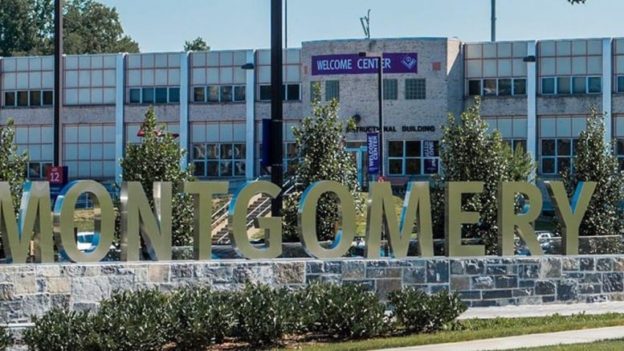1 February 2023
Montgomery College, the largest community college in Maryland, is an active participant in the statewide Associate of Arts in Teaching (A.A.T.) program. With approximately 43,000 credit and non-credit students, three campuses (with a fourth scheduled to open in fall 2023), and two workforce development sites, Montgomery College has been named the most diverse community college in the continental United States. With approximately 26% of the student population identifying as Hispanic, the College was recently designated as a Hispanic Serving Institution.
Collaboration between the School of Education and World Languages discipline at Montgomery College began early on in the establishment of the A.A.T. in Spanish in Maryland, which the Maryland State Department of Education describes as follows:
Maryland’s 16 community colleges all have designated transfer degree pathways that lead to initial Maryland teacher licensure/certification. The Associate of Arts in Teaching (AAT) degree is an articulated transfer pathway into the corresponding undergraduate degree program in teacher education across all Maryland public and private four-year institutions with approved teacher education programs in disciplines in which there was a shortage of qualified teachers in the state: English, chemistry, math, physics, and Spanish.
The A.A.T. degree is intended to fulfill the first two years of a four-year degree program. Per the Code of Maryland Regulation (COMAR) 13B.02.03.24, the AAT degree satisfies all lower- division teacher education program outcomes without further review from the four-year institution and may transfer up to 70 credits forward into any four-year education program into which the student has been admitted. (Maryland’s 2)
A professor of mathematics and a professor of Spanish served on the first statewide groups to craft new secondary A.A.T. programs for Maryland. Once the statewide parameters were set, starting in 2004-2005 they worked closely together to implement the offerings at Montgomery College. These faculty worked together over the years as one moved on to serve as Director of the School of Education and the other became chair of the Department of World Languages and Philosophy and then Dean of Humanities. The association between these departments has continued and developed over time. Now in its 17th year, this relationship continues with others at the helm.
In its early years, the program served 10 to 15 students a year; it has grown to as many as 35 to 40 at its highest point. This current semester enrollment is 27 students. The A.A.T. in Spanish represents a clear path to post-completion success for heritage speakers of Spanish as well as for all students who wish to serve as post-secondary teachers in the state of Maryland and elsewhere.
Spending the first two years at Montgomery College offers students a number of advantages as they prepare for transfer. Community college students benefit from small class size and close relationships with faculty members, as well as a clear pathway to graduation that ensures they will not lose time or money upon transfer (Weisburger 10; Ignash and Slotnick 63). The fieldwork experience, which is part of the degree, provides students a valuable experiential learning opportunity and gives them the chance to experience the career path they have chosen (Ignash and Slotnick 61). Moreover, evening and weekend classes, as well as classes in multiple modalities, ensure that working students and student parents can find classes that meet their needs.
At the same time, challenges exist, both at Montgomery College and upon transfer. Financial hardship, particularly in the pandemic and post-pandemic environment, continues to impact students, who may lack the materials they need to be successful in class. Scheduling, particularly in a time of declining enrollments, also remains a challenge, as working students seek flexibility and fewer sections are offered. This remains true upon transfer, as students seek to fit upper-level courses into an already busy schedule (Weisburger 11).
Valuable opportunities for disciplinary collaboration exist for institutions seeking to enact similar programs. Building and maintaining relationships between faculty from different disciplines is key, both during and after degree design. Ongoing communication between education faculty and faculty in the content discipline to identity co- and extra-curricular opportunities is required to help students to further their professional goals. At Montgomery College, the chapter of the Sociedad Honoraria de la Lengua Española (Spanish honor society), faculty programming Hispanic Heritage Month and International Education Week, and outreach about opportunities and workshops offered by professional societies provide future educators opportunities to explore their chosen field. The degree program benefits the education program and the world languages discipline alike, offering Montgomery College faculty the opportunity to connect with talented students who share their passion for the discipline and will ultimately serve the students of the county and the state.
References
- Ignash, Jan M. and Ruth C. Slotnick. “The Specialized Associate’s Degree in Teacher Education. Effective Pathway or Degree Proliferation?” Community College Review, vol. 35, no.1, 2007, 47-65.
- “Maryland’s Community Colleges Program Directory: Associate of Arts in Teaching (A.A.T.).” Maryland State Department of Education. 2001, https://www.marylandpublicschools.org/about/Documents/DEE/ProgramApproval/AAT/Community_College_AAT_Directory.pdf. Accessed 31 January 2023.
- Weisburger, Anita T. “The Student Perspective on Maryland’s Associate of Arts in Teaching Degree.” Journal of Early Childhood Teacher Education. 2002.
Additional Resources
- McDonough, Maureen L. “A New Degree for the Community College: The Associate of Arts in Teaching.” New Directions for Community Colleges, no. 121, 2003, 37-45.
- Perkins, Britine and Cody Arvidson. “The Association Between a Community College’s Teacher Education Program and the 4-year Graduation Rates of Black and Hispanic Teacher Education Students.” Community College Journal of Research and Practice, vol. 41, no. 8, 2017, 507-516.
- Walker, David A. and Portia M. Downey. “Success by Degrees: Addressing Teacher Shortages through a School-Community College-University Partnership.” Community College Journal of Research and Practice, vol. 32, 2017, 507-516.
(Adapted from a presentation by Sarah Campbell, Sharon Ahern Fechter, and Kayra Alvarado of Montgomery College at the 2023 MLA Convention)

